Re-visiting the Rashaad Penny pick now that he's one of the top RBs in the NFL
Seaside Joe 1310/1311
Today we’re going to continue dispelling the myth that choosing a running back in the first or second round is draft malpractice.
I tend to be defensive of all draft picks within the first year or two of that selection. It doesn’t matter to me what position that person plays, because dynamic, valuable, and entertaining football players come in all shapes, sizes, and roles, and I see the rookie year as a wash or a mulligan.
And yes, I do think entertainment value is a worthy consideration for personnel decisions. What do you think Detroit Lions fans would value more: Getting to go back to the 1989 NFL Draft to select Derrick Thomas or Deion Sanders. Or keeping the number three pick the same and getting to watch Barry Sanders play 153 games for their favorite team over the next 10 years?
Sanders was picked directly ahead of two Hall of Famers—like Sanders, two of the best players to ever play their positions—and you can’t go wrong with any of them. But I will say this: Nobody ever talks about the fact that Thomas never reached the Super Bowl or that Primetime only helped the Atlanta Falcons reach the playoffs one time during his five seasons with the team before leaving to win Super Bowls somewhere else.
Nobody brings up the fact that a team selected Tony Mandarich over Barry Sanders. Mandarich was “the perfect offensive tackle prospect.” Imagine if he had been a running back, how people could have used that as an example of how “see, you should never draft a running back.”
They didn’t use Mandarich as a warning label for offensive tackles.
And if the Lions had this modern mentality to avoid the running back position in 1989, maybe instead of Derrick Thomas they wind up with Broderick Thomas (sixth overall) or Burt Grossman (eighth) or Eric Hill (10th).
Lions fans have suffered for a long time. Not because of Barry Sanders.
But sure, it is fair to say that running backs are not used in the game in the same way today than they were during Sanders’ era. And Sanders is a one-of-one case at the position, like Deion Sanders and corners. It’s not that I fail to see why we’ve gone from a world where five or six running backs could get drafted in the first round to only the very special talents pushing for late-pick inclusion on day one.
If every GM is looking at the other 31 teams and seeing that there’s little competition for the top running back options either through the draft or free agency, then the devaluation of the position makes sense. I also think that the actual devaluing of the position itself is causing further erosion at the earliest levels of football:
It used to be that every kid wanted to play running back because running backs were the stars. They got the ball all the time, they were promoted by the NFL as the preeminent players to watch, they scored the touchdowns, and they were picked early in the draft.
Read Next: Are Seahawks happier now without Russell Wilson?
We all knew Barry Sanders, LaDainian Tomlinson, and even Reggie Bush. We argued if a team should pick Bush or Vince Young. And then a team picked Bush over Young and D’Brickashaw Ferguson and Vernon Davis. Nobody thought that was weird 15 years ago.
But in the time since maybe the Adrian Peterson/Marshawn Lynch draft in 2007, the narrative around running backs has changed. After seeing the workload take a toll on some of the league’s greatest talents at the position, the talk was more centered around on how dangerous the position was, that it led to more injuries, and the teams would need to use a committee of players to fill multiple roles on the offense instead of it only being one guy.
Nobody thinks this is weird at wide receiver, probably because passing plays result in more yards than running plays. Whatever the case, running backs started making the least amount of money, getting drafted lower than most other positions, and any news about a running back injury took centerstage in the headlines, especially since we live in an era of fantasy football seeming about as popular as actual football.
So then what do you tell the most talented football players when they get to high school, if not earlier?
“Please stop playing running back!”
You want to make plays with the football? Move to wide reciever.
You want to be in control of the offense? Move to quarterback.
You want to have a more direct path to the NFL? Move to cornerback or linebacker, the competition is lighter.
It’s just better for their future.
I think that there is a finite amount of athletic talent and that whereas many of those players used to flock to running back, they’ve since started migrating to literally any other option on the team. It’s seen as safer for the body, better for your draft stock, and will lead to greater financial rewards and long-term stability.
Even as I defend the people who play the running back position and the draft picks used on running backs, I’ve also been saying this for a long time: “If you or your loved one is playing running back, try something else!”
The 2008 draft was a disaster for running backs (draft position): Darren McFadden (4), Jonathan Stewart (13), Felix Jones (22), Rashard Mendenhall (23), Chris Johnson (24). There is talent there, especially with Johnson. But perhaps worse for running backs than the busts were the steals: Matt Forte, Jamaal Charles, and Ray Rice were picked in rounds two and three.
The 2009 draft saw all three first round backs (Knowshon Moreno, Donald Brown, Beanie Wells) have worse careers than LeSean McCoy, Shonn Greene, and Rashad Jennings. The 2010 edition saw underwhelming returns for C.J. Spiller (9) and Ryan Mathews (12). And 2011 saw a bit of a change in strategy, as Mark Ingram won the Heisman and was by far the best back in the draft, but he went 28th overall, the only first round pick.
Once Trent Richardson (3) poorly represented backs in the 2012 draft, the discussion was all but over. Whereas Breece Hall and Kenneth Walker III could have been top-10 picks in the aughts, they went 36th and 41st because of modern devaluation.
Since then, Todd Gurley, Melvin Gordon, Ezekiel Elliott, Leonard Fournette, Christian McCaffrey, and Saquon Barkley have been the only running backs picked in the top-15. The four most talented showed significant wear and tear prior to playing on second contracts, and Gordon, Fournette are underwhelming as starters. Barkley currently leads the NFL in rushing yards and could be Geno Smith’s greatest competition for Comeback Player of the Year. But he gave little value, entertainment or otherwise, in the previous three.
Which brings us back to the 2018 NFL Draft and Rashaad Penny.
At the time of the draft, I defended the pick because by many accounts Penny was perhaps as good of a running back prospect as Ezekiel Elliott, but available about 25 picks later than when Elliott went fourth overall. They were the same size, same speed, and Penny had rushed for 2,248 yards and 23 touchdowns in 13 games as a senior at San Diego State.
Penny gained over 200 rushing yards in each of his last five college games.
To some, Penny was a second round prospect. To me, devaluation of the position made Penny a great value. Only two years earlier, Elliott was a top-five pick. Seattle had traded down twice and still ended up with a prospect who had good odds to become a starter in the near future.
It’s hard to defend myself now. Penny dealt with some ailments as a rookie and was only a complement to starter Chris Carson. He missed six games and failed to take over the starting role in 2019. He missed 13 games in 2020. It became harder and harder to hold off the fans who desperately wanted the Seahawks to cut Penny in 2020 and 2021.
Already 13 weeks into the 2022 season, Penny’s departure from Seattle was all but inevitable and only two months out.
Then fans finally got to see why the Seahawks used a first round pick on Rashaad Penny.
It’s completely understandable why fans would still be upset that the Seahawks drafted Penny in 2018, even taking into account the success he’s had since taking over as the starting running back nine games ago. I am not here to argue that Penny was the “right pick” or that teams should be drafting running backs early again.
Instead, I want to ask this: Was Rashaad Penny really a worse pick than Malik McDowell, L.J. Collier, Marquise Blair, or Dee Eskridge?
Why is it that those players get to fail without having the pick called into question based on position? Why is it okay to draft a center with a high floor instead of a running back with a high ceiling? Are we making too big of a deal out of the narrative that there’s some immense value difference between a run-stuffing defensive tackle and a potential three-down running back?
Because a lot of this really is built out of a narrative that has no empirical evidence. Are you “happier” that Darrell Taylor missed his entire rookie season and is trending backwards over his career because “at least he’s not a running back”?
When Penny or Ken Walker gets injured it’s “because they’re running backs.”
Thankfully we haven’t seen any injuries from Taylor, McDowell, Collier, Eskridge, Will Dissly, Paul Richardson, Jordan Hill, Naz Jones, Phil Haynes, Damien Lewis, or Tre Brown. They’ve been healthy this entire time.
For me that narrative on running backs means that I always have to put an asterisk on it when people start pouting about an injury to one—*Do you also do this when a quarterback, a receiver, or a cornerback gets hurt?
Because the attrition rate at cornerback seems to be worse than it is at running back recently. Something else I’ve noticed recently is that a 26-year-old Rashaad Penny with 329 career carries under his belt is faster than most of the other guys in the NFL. At any position.
Penny ran a 4.46 at the NFL Combine, carrying around 220 lbs. Elliott ran a 4.47 at 225. Lynch ran a 4.46 at 215. Travis Etienne, a recent first rounder, ran a 4.45 at 215.
Walker ran a 4.38 at 211.
On Sunday against the Lions, Penny hit 20.84 MPH on one of his touchdown runs, the second-fastest time of any player in the NFL last week. The fastest time belonged to Tariq Woolen on his pick-six:
Just imagine that again: Out of every NFL player, a running back in his fifth season, a player heavily criticized for durability, is also still one of the fastest in a league of fast guys. The Seahawks did not get much out of Penny on his rookie contract, but it was their relationship that led to Seattle re-signing him to a one-year deal worth a bit more than $5 million.
Now Penny gets the rest of this season to build off of the 151 rushing yards he had against Detroit and he could parlay it into an extension with the Seahawks—one that would definitely come with controversy regardless of how valuable, entertaining, and adored he is. Penny leads the NFL in several notable analytical categories, but showing off the fact that he hasn’t lost a step since the draft might be more valuable than anything else.
Since the Penny pick has been scrutinized so many times over the last 4.5 years, let’s recap the 37 players chosen after him and prior to the start of the third round.
Before we do, your support with $5 for a month or $55 for a full-year would be greatly appreciated:
I will start with 10 really successful players picked between 28-64:
QB Lamar Jackson (32), RB Nick Chubb (35), LB Shaquille Leonard (36), RT Braden Smith (37), WR Courtland Sutton (40), OLB Harold Landry (41), S Jessie Bates III (54), CB Donte Jackson (55), RT Brian O’Neill (62), CB Carlton Davis (63)
One of the ten-best players picked after Penny is 1000-percent a running back. How much harder would the “no-RB narrative” be able to push in Seattle if the Seahawks had just gone with Chubb instead of Penny?
Out of the other eight, leaving aside Lamar, how many would be significantly more valuable to the Seahawks today than Penny? I’m sure you could make an argument for all of them. For entertainment value, I’m not sure that any surpass Penny other than Leonard.
The bottom-10 players taken between picks 28-64:
DT Taven Bryan (29), CB Mike Hughes (30), WR Dante Pettis (44), CB Josh Jackson (45), DE Breeland Speaks (46), OLB Kemoko Turay (52), CB M.J. Stewart (53), CB Duke Dawson (56), DT P.J. Hall (57), WR James Washington (60)
Why not “DTs don’t matter” or “CBs don’t matter”? Where’s the outrage over cornerback picks that do not work out? There’s a high rate of injury at corner, a high bust rate as teams struggle to diagnose or coach a player into playing man after a career of zone—or zone after a career of man. Plus, the best Seahawks cornerbacks have all been day three picks, a group that appears to be at least one man bigger after the addition of Tariq Woolen.
Wasn’t Penny a better selection than any of these 10 picks?
The Rest:
S Terrell Edmunds (28), RB Sony Michel (31), OL Austin Corbett (33), G Will Hernandez (34), RB Ronald Jones (38), C James Daniels (39), TE Mike Gesicki (42), RB Kerryon Johnson (43), WR Christian Kirk (47), LB Uchenna Nwosu (48), TE Dallas Goedert (49), OL Connor Williams (50), WR Anthony Miller (51), CB Isaiah Oliver (58), RB Derrius Guice (59), WR D.J. Chark (61), DE Tyquan Lewis (64)
If I were to put Rashaad Penny in any of these three groups (top-10, bottom-10, the middle), he would definitely come in the middle. And he’s got such an intriguing road ahead, whereas I just can’t imagine myself getting excited for the next Seahawks game because of the chance to watch Austin Corbett, Will Hernandez, or Terrell Edmunds.
And I don’t think that if the Seahawks had drafted Tyquan Lewis, the last pick of the second round, instead of Penny, that I would be able to understand the argument that he was “a better risk because he plays defensive end.” Lewis has been injured, he’s been inconsistent, he hasn’t been productive. Having him on the Seahawks would be like having… L.J. Collier on the Seahawks.
Which fans among us are more thrilled to see the return of Collier this week than the next start by Rashaad Penny? Show yourselves!
For those of you who just don’t want to see Seattle pick running backs in the first two rounds, I understand you too. The devaluation of the position is real. Walker had to be drafted at 41, he wasn’t going to go much later than that. So I will defend that pick until there’s no defense left.
But as we’ve seen with Rashaad Penny… You just can’t be too sure when the defense has rested.


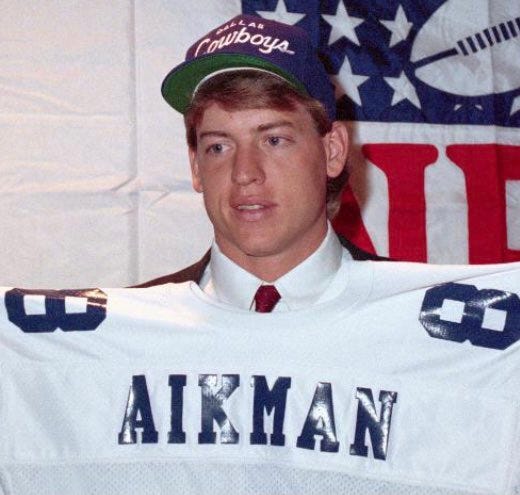
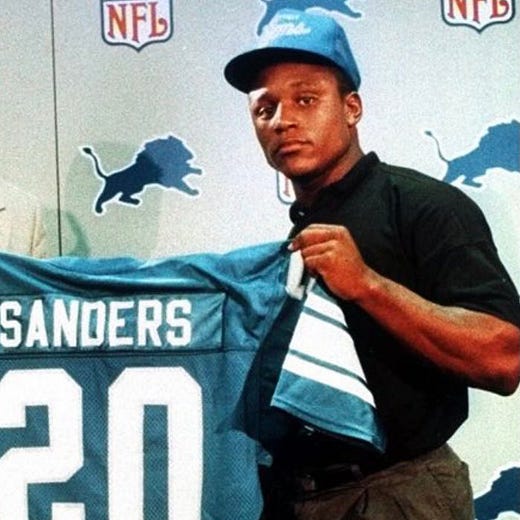
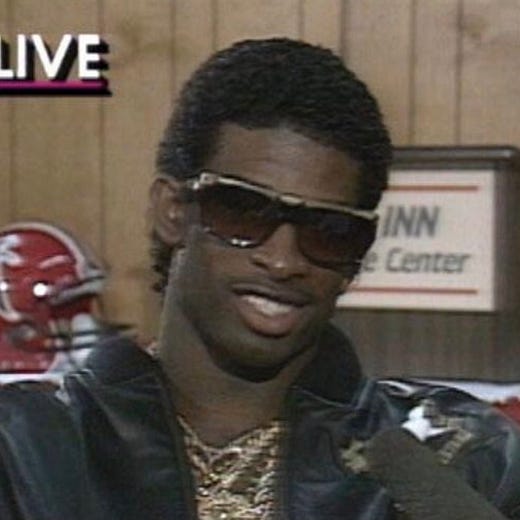
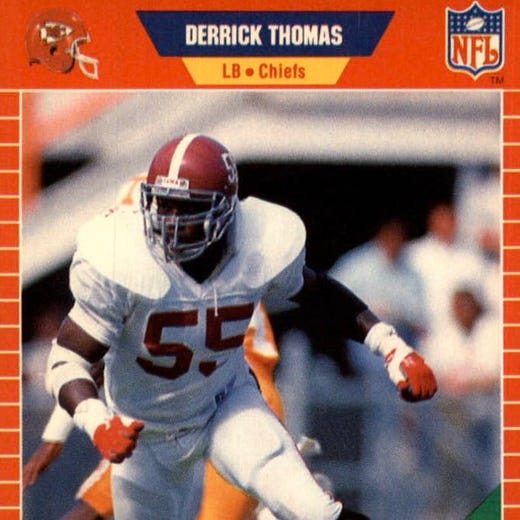
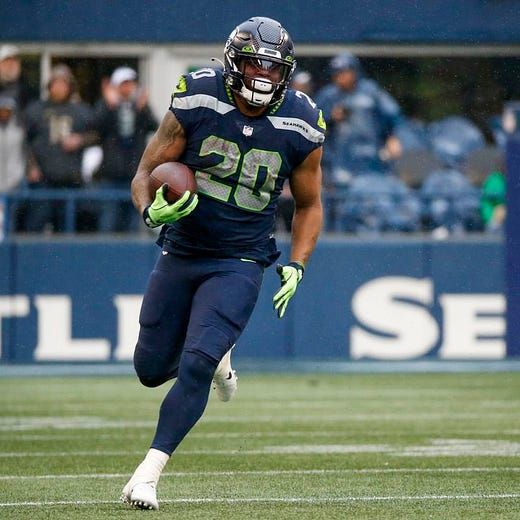
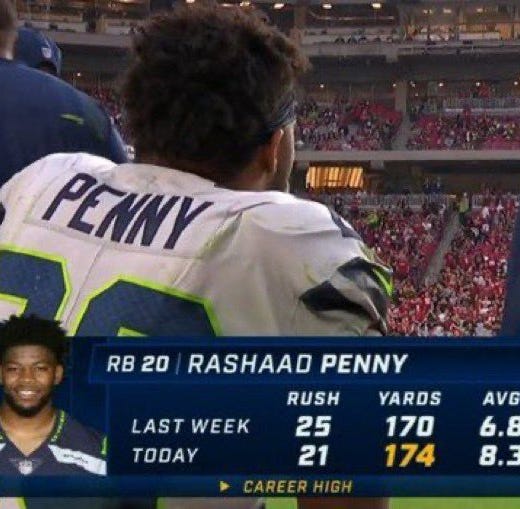
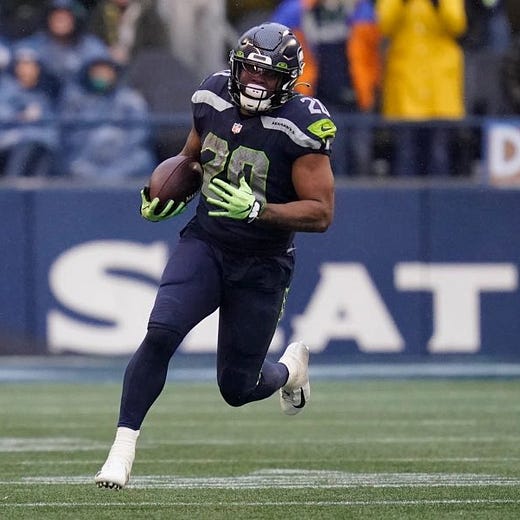
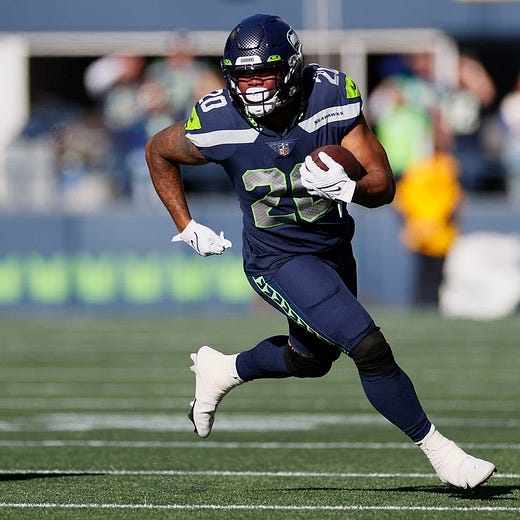
What most talking heads forget is that the offensive line and the scheme has a huge bearing on a RBs success.
Remember the idiot Bill's never gave Beast Mode enough carries to establish a rhythm or wear opposing defenders down and they used OJ as a receiver until the coach was canned!
Some schemes are more amenable to RBs success than others.
And last but not least, there a more RBs in the HOF than any other position. A balanced offense is usually the most successful.
Ken you know how I have always backed Rashaad Penny. He has always been a stud and scored some memorable TDs in his first three seasons. Two off the top of my head, first was around a 25 yarder against the Rams, in his first season. He took off towards the left side line, got three quarters of the way there, then reversed field and out ran the entire Rams defense and scored in the right corner. The other was a 50 yard beauty in the Steel city. Penny got the handoff from Russ almost at the same time their defensive end broke through the line of scrimmage on a B Line for Penny. Penny made one quick jab step to his right and left the D End grasping at thin air. All he did after that was out race the entire Steelers defensive backs scoring from 50 yards like he did against the Lions last week. I have always publicly backed him as he did show us enough that his talent was obvious. I really wanted to see Carson and Penny on the field at the same time, both are big enough to fill the Fullback spot. We have seen KW3 and Penny on the field together but it's always been Walker linning up at Fullback, Pete must have his reasons. For all who think Pete is far to enamered by running the ball, the Hawks had a successful coach in the early 80s who ran more. His nickname said it all "ground Chuck", Knox. We used a play that worked everytime and I think it would be great for our backs. In the dark ages maybe watching on black and white TV. John L Williams would line up at Fullback and Curt Warner would be the tailback. It was a screen to Warner in the flat or so everybody always believed. John L would run into the line put a rub block on who ever was there, then he would escape to the other side of the field unguarded..Pump fake the screen to Curt, and QB Dave Craig would sell it, then he would turn and throw to John L on the open side no one was ever with in 20 yards and that was if a defender was lying down hurt. The play never went for less than 30 yards, and they scored a number of times over 3 or 4 years. Can you imagine how well that would work for KW3. I have been thinking about it since I saw Walker line up at FB. A good runninback is worth his weight in gold and they should be paid on a higher scale in their first 4 years, a great majority get hurt and don't make it that long
In my view and not a coincidence, the 2011 players contract helped devalue the runners, which is right on your time scale.
Finally I apologize for the length there is one player you listed that I would have wanted more than Penny using 20/20 hindsight and that is the Dolphins Mike Gizeki, tightends are second in being under payed.